As spring blossoms across Crete’s rugged landscapes, the island prepares for its most cherished annual celebration. Orthodox Easter—the cornerstone of Greek spiritual and cultural tradition—will be observed with profound reverence and joyful festivities across Crete from April 14-20, 2025. This year’s celebrations promise to showcase the island’s rich heritage through time-honored customs that have endured for centuries.

Holy Week Schedule: Key Dates and Events
Holy Thursday (April 17)
Orthodox Easter, known as Pascha, is the most significant religious celebration for Greeks and Orthodox Christians worldwide. It commemorates the Resurrection of Jesus Christ, symbolizing victory over death and the promise of eternal life. Preparations begin with Great Lent, a 40-day period of fasting, prayer, and reflection, culminating in Holy Week, which reenacts Christ’s final days.
On Holy Thursday, Easter preparations intensify as households across Crete engage in the symbolic tradition of dyeing eggs a vibrant red, representing the blood of Christ. The air fills with the sweet aroma of tsoureki (Easter bread) and kalitsounia (Cretan cheese pastries) baking in ovens throughout the island.

Easter isn’t just a religious celebration for Cretans—it’s when their cultural identity shines brightest through food, family gatherings, and time-honored traditions.
Some tavernas and cultural centers may offer cooking workshops for visitors eager to learn these traditional techniques. Interested visitors should inquire at their accommodations for recommendations on authentic culinary experiences during this time.
Good Friday (April 18)
As darkness falls across the island, the solemn Epitaphios processions begin. These candlelit processions feature flower-decorated biers representing Christ’s tomb carried through streets lined with reverent onlookers.
In Chania, processions take place throughout the Old Town, with each church organizing its own solemn journey. While processions typically begin in the evening following church services, exact times and routes vary by parish. Visitors are advised to check with local churches or their accommodation for the most updated information about nearby processions.
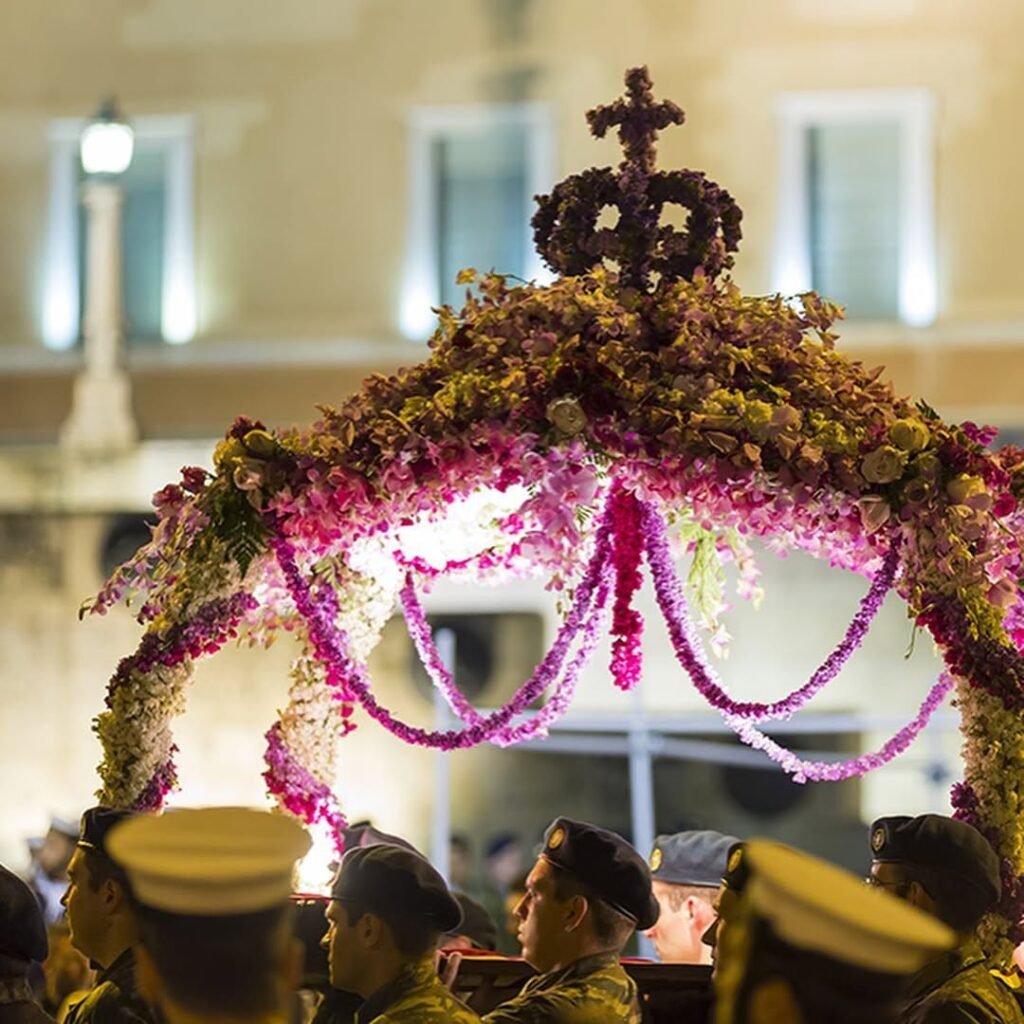
In Heraklion, the main procession is expected to depart from Agios Minas Cathedral at approximately 8:00 PM, winding through the city center accompanied by Byzantine hymns. As with all Easter events, visitors are encouraged to verify exact times locally as schedules may be adjusted.
Smaller villages across the island offer more intimate processions where visitors can experience the raw emotion and community spirit of this sacred evening.
Holy Saturday (April 19)
The day culminates in the midnight Resurrection service—the most anticipated moment of the Orthodox calendar. Churches across Crete will be darkened until precisely midnight, when priests announce “Christos Anesti” (Christ is Risen) and distribute the Holy Flame to congregants.
The night sky erupts with fireworks as the resurrection is celebrated, and families carry candles home to bless their houses by marking crosses above doorways with the flame’s soot. After the service, the 40-day Lenten fast is broken with traditional magiritsa soup made from lamb offal.

Easter Sunday (April 20)
From dawn, communities across Crete begin their preparations for the day’s feast. The centerpiece is the spit-roasted lamb or goat, slowly turning over open fires in village squares and family courtyards. The air fills with mouth-watering aromas as families gather for the most important meal of the year.
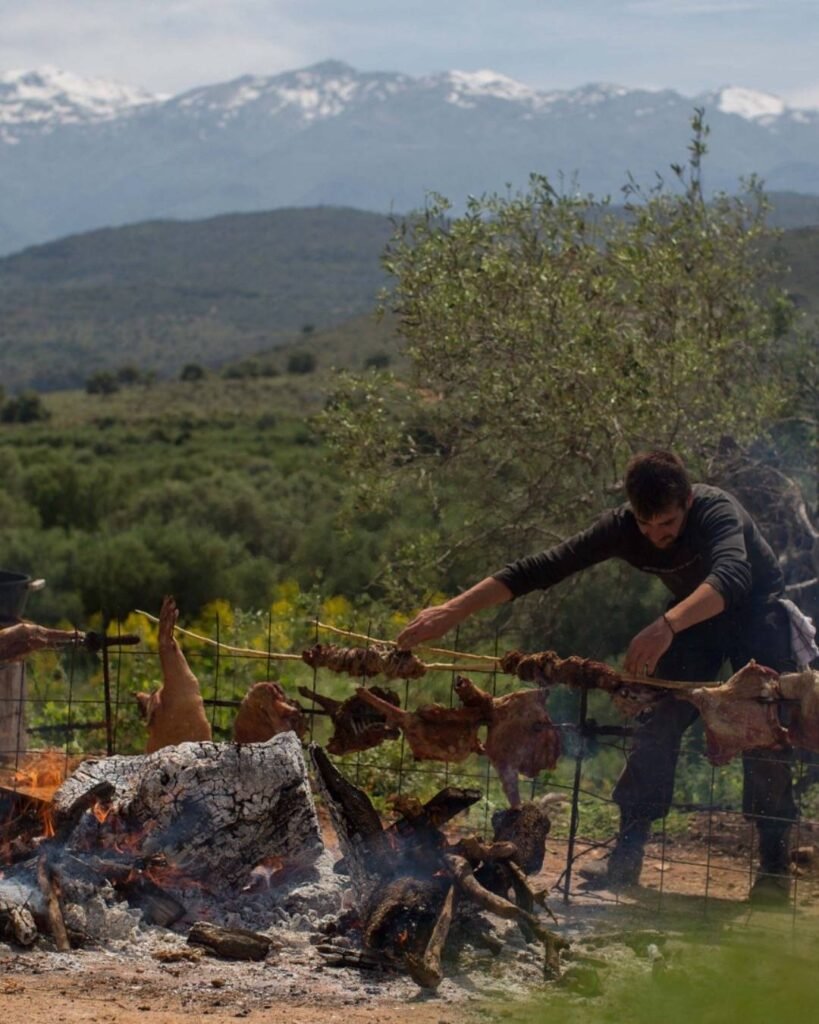
Traditional dishes accompanying the roasted meat include kokoretsi (lamb intestines wrapped around offal), roasted potatoes seasoned with lemon and oregano, fresh salads, and an array of honey-drenched sweets. The celebration continues with music, dancing, and the traditional egg-cracking game where participants tap red eggs against each other’s—the owner of the last uncracked egg is said to have good luck for the year ahead.
Where to Experience Authentic Cretan Easter
Chania
The Old Town of Chania offers one of the most atmospheric settings for Holy Week. Visitors can follow candlelit processions through Venetian-era streets and join locals at tavernas near the harbor that will remain open throughout the celebrations.
Heraklion
Crete’s capital presents a blend of solemn tradition and vibrant celebration. The Good Friday procession from Saint Minas Cathedral begins around 8:00 PM after the church service, with the solemn procession winding through the city center accompanied by hymns and a devout choir. Both locals and visitors participate in this deeply spiritual event.
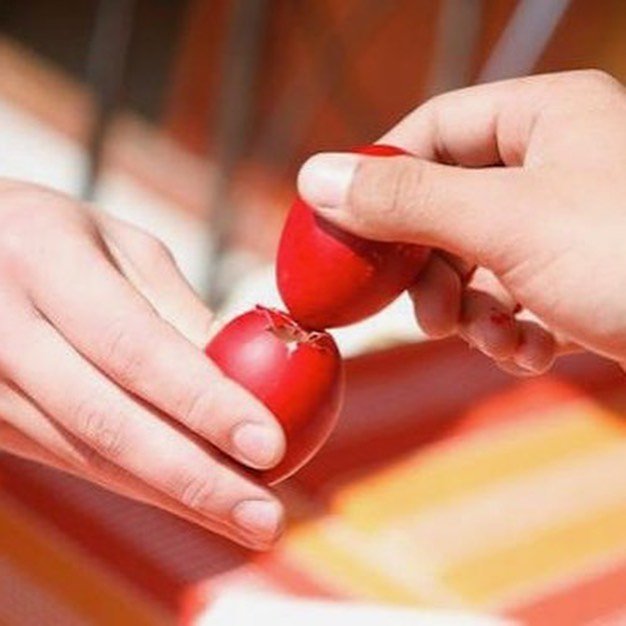
For those seeking traditional Easter meals in Heraklion, some establishments catering to tourists will remain open throughout the weekend, particularly in the central areas. This allows visitors to experience authentic Cretan Easter cuisine even if they’re not attending a family celebration.
Rural Celebrations
For the most authentic experience, head to smaller villages like Archanes, Vamos, or Zaros, where community-centered celebrations welcome visitors to join extended family gatherings.
Visitor Tips and Recommendations
Where to Dine
While many family-run tavernas close for Easter Sunday as owners celebrate with their families, a limited number of establishments catering to visitors will remain open. Those planning to dine out during Easter Sunday should note that options will be more limited than usual and advance reservations are absolutely essential, as this is one of the most important family holidays in Greece.
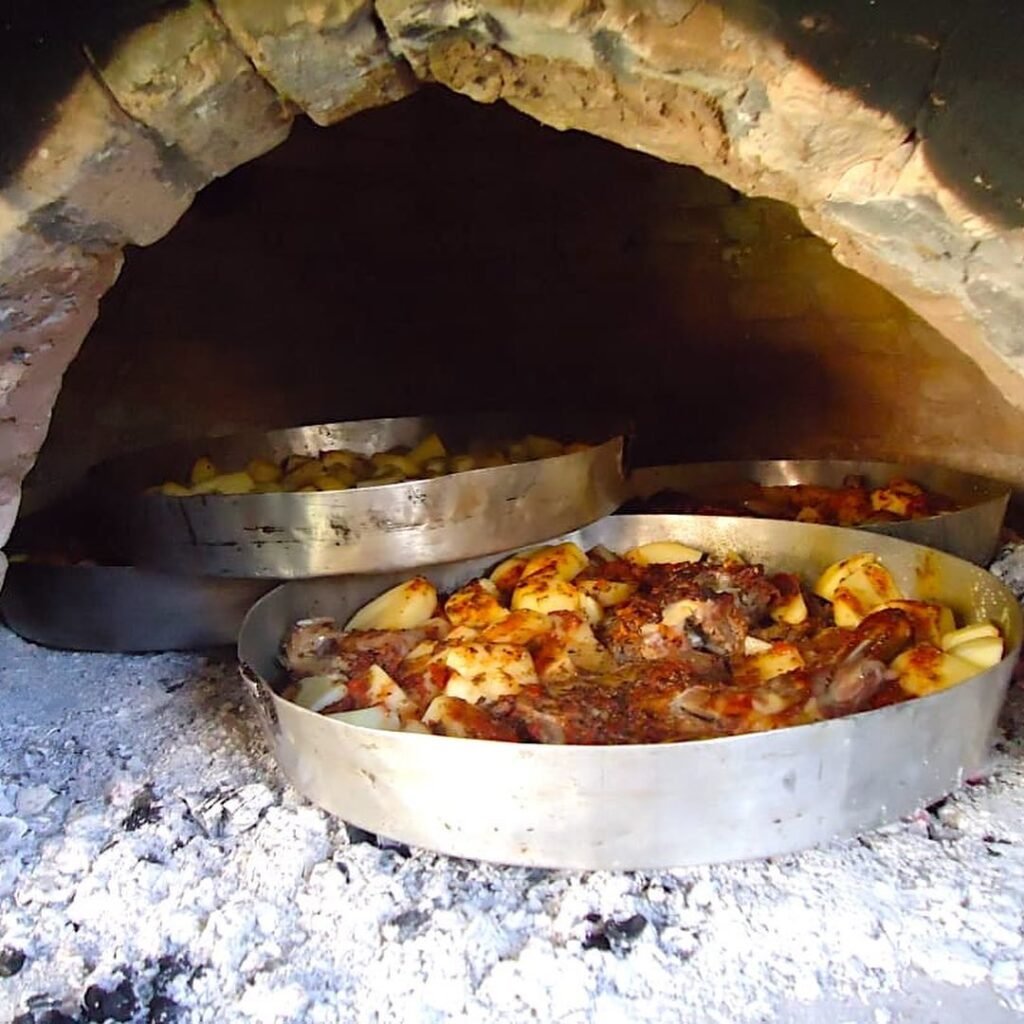
Confirmed open restaurants include:
- Gramvousa Restaurant in Kissamos: Featuring traditional spit-roasted lamb and live music
- Creta Maris Resort in Hersonissos: Hosting an extensive Easter buffet with folkloric performances
- Emilia’s Taverna in Zourva: Offering an authentic village Easter experience with panoramic mountain views
Transportation Considerations
Public transportation runs on limited schedules during Holy Week, particularly from Good Friday through Easter Monday. Visitors are advised to rent cars to explore rural celebrations or arrange accommodations within walking distance of major events in cities.
Cultural Etiquette
When attending church services, modest dress is appreciated (shoulders covered, no shorts). Photography is generally permitted during processions but should be discreet during church services. Most Greeks welcome visitors’ interest in their traditions and are happy to explain customs to respectful guests.
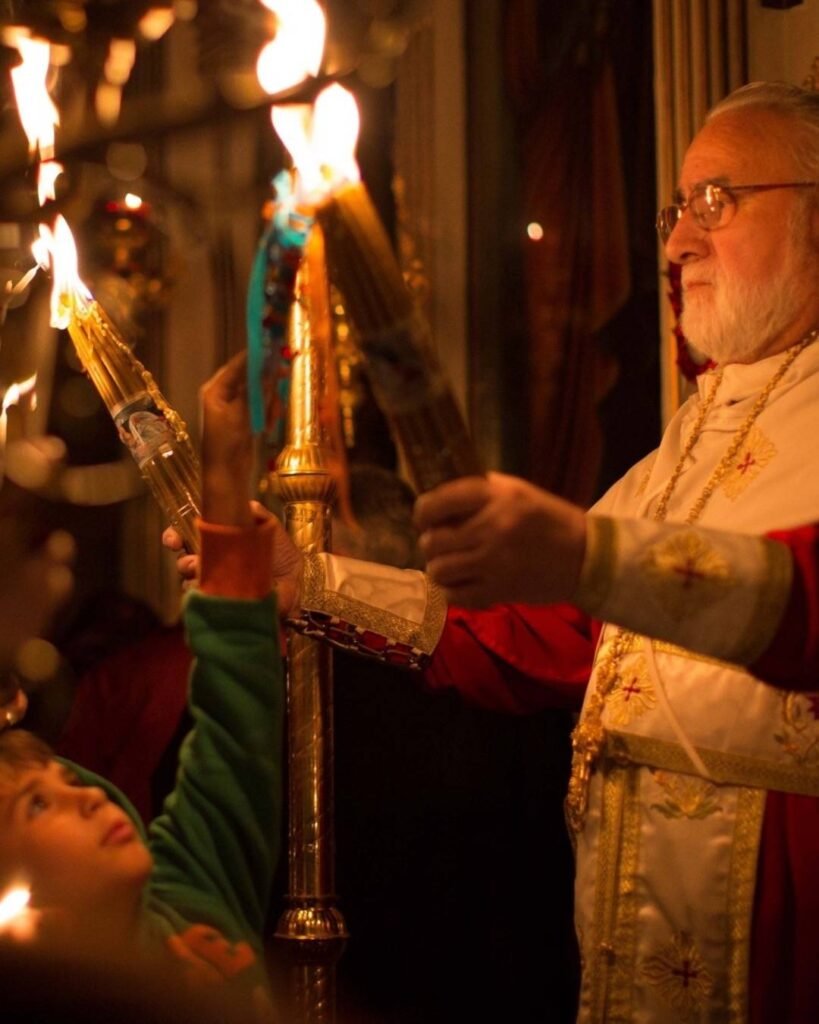
Beyond the Religious Celebrations
While Orthodox Easter’s religious significance remains paramount, the holiday also marks the beginning of spring festivities across the island.
Nature lovers can take advantage of perfect hiking weather along trails adorned with wildflowers. The Easter weekend coincides with peak blooming season for many native Cretan flora, making it an ideal time to explore the island’s gorges and mountain paths.
The Saturday market on Minoos Street in Chania will be open on Easter Saturday, April 19, 2025, from early morning until approximately 2:00 PM. This vibrant market offers visitors a chance to experience locals shopping for their Easter celebrations, with stalls selling fresh seasonal produce, traditional Cretan specialties, and possibly Easter-related items like special cheeses for Easter dishes, herbs for dyeing eggs, and other holiday essentials. For the best selection and most authentic atmosphere, visitors should plan to arrive in the morning hours when the market is at its liveliest.
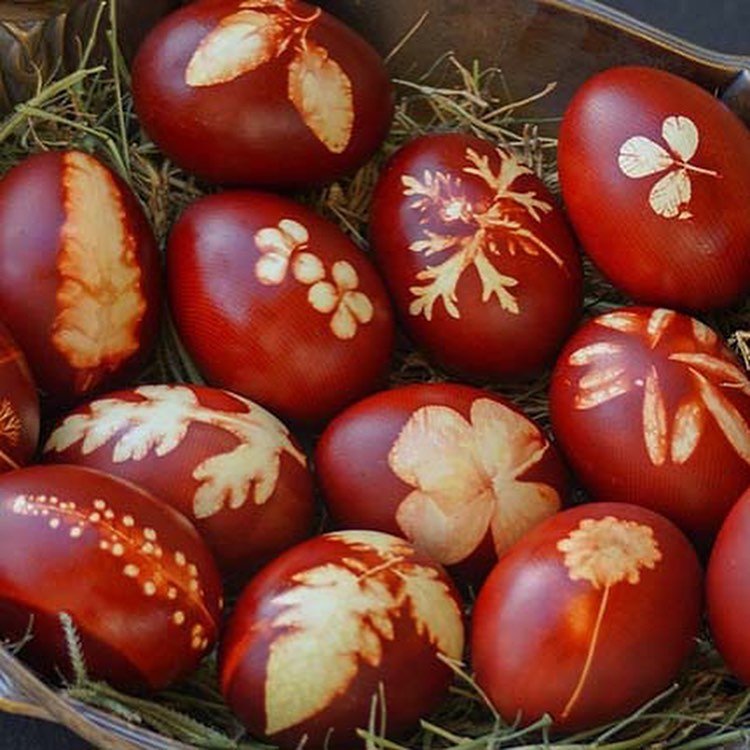
Conclusion
Orthodox Easter in Crete offers visitors a rare glimpse into living traditions that blend Byzantine religious heritage with distinctly Cretan customs. Whether participating in a candlelit procession through ancient streets, joining a village feast, or simply savoring the seasonal specialties in a local taverna, Easter provides an unparalleled window into the heart of Cretan culture.
The combination of spiritual depth, culinary excellence, and community celebration makes this an ideal time to experience the authentic Crete beyond the typical tourist season—a Crete where centuries-old traditions remain vibrantly alive in even the youngest generations.
Note: While many historical sites and tavernas observe regular hours during Holy Week, visitors should confirm opening times as some locations may have modified schedules.
Published on April 11th, 2025
Further reading:
15 Amazing Day Tours From Chania You’ll Wish You Knew About Sooner
